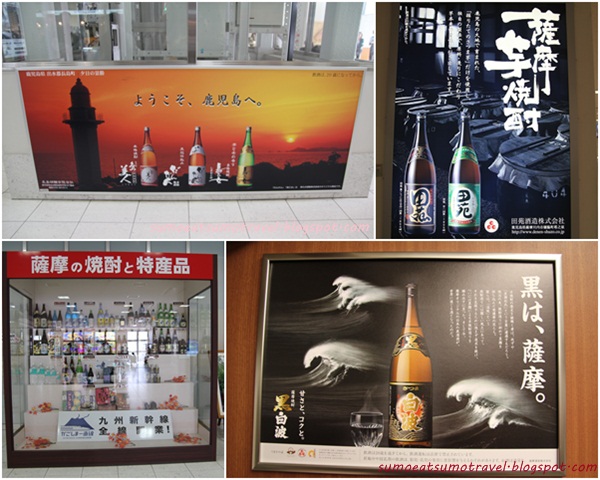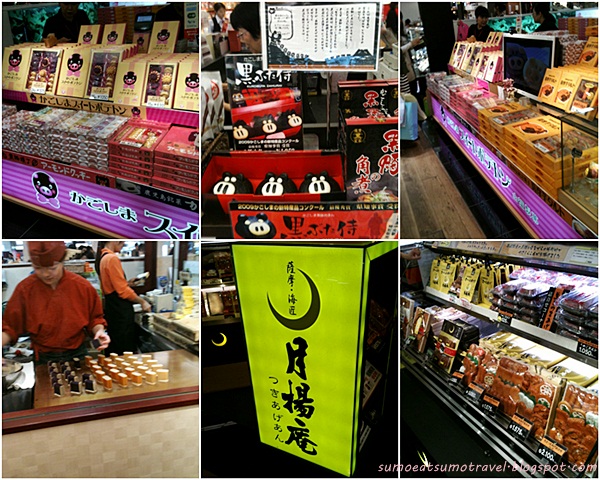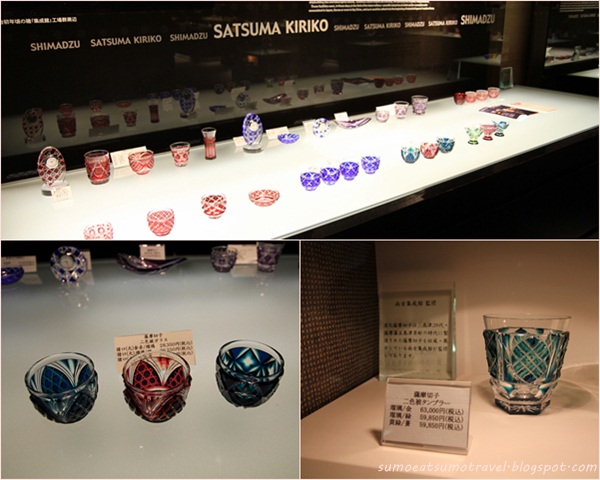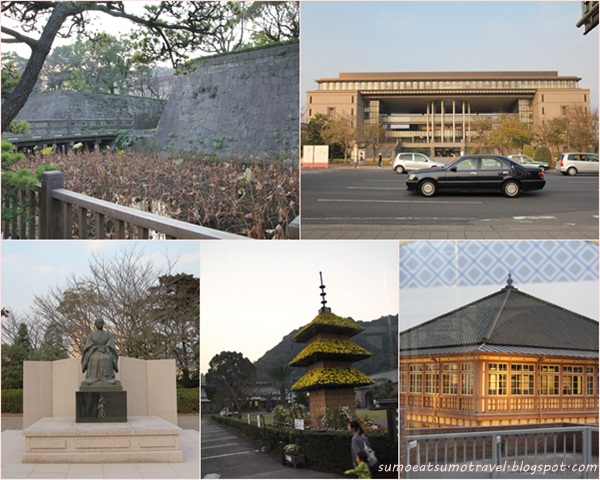The best food to pair with Kagoshima shochu is satsuma-age, a variety of fried fish cake. Some of the primary ingredients are cod, sardines, and other types of fish. These are mixed together with salt, eggs, sweet potato shochu, and seasonings to form a thick paste, which is then shaped and fried in vegetable oil. The cakes can vary in shape from flat pieces or corners, to cylinders the size of your thumb. They can be end up in a variety of different configurations, sometimes containing vegetables such as carrots and burdock root, other times flavored with cheese, or even smoked with cherry wood.
7 January 2012
Kyushu Day 2 - Fukuoka - Kagoshima
Morning breakfast at the hotel. The hotel provides complimentary breakfast for all guests. Simple Japanese / western breakfast buffet but fresh and good. You can also get free drinks from the vending machine!
Vending machine providing free drinks during breakfast from 7-830am on weekdays and 7-850am on sundays and public holidays.
Almost missed our Shinkansen! Managed to arrive at JR Hakata train station 2 minutes before the train departs. Japanese train schedules are right on the dot and the trains will depart promptly at the departure time stated. Time and tide waits for no man...
As the direct train from Fukuoka to Kagoshima was full, we took the Tsubame train to Kumamoto, and changed to the Mizuho train in Kumamoto to Kagoshima.
Japanese trains are really clean and comfortable!
Even the passageway to the toilet are speckless!
Reached Kumamoto station after 1 hr ride.
Weird vending machine which is below eye level...
Boarded the Mizuho train bound for Kagoshima... not as new as Tsubame
After another 45 minutes, we finally reached Kagoshima Chuo station!
Train service staff in their uniform leaving the train. They do look flight attendants.. well Japanese take pride in their job, regardless if it is just a train service staff.
Kagoshima is famous for their... Shochu! You can find posters, banners, even a display of the different types of shochu almost everywhere in the train station.
There is a omiyage (souvenir) street just opposite of the Kagoshima Chuo station main exit. Most of the stalls sell Kagoshima famous products, such as Satsuma age (fried fishcake), biscuits carrying the buta (pig) shape (Kagoshima is famous for their kurobuta or black pig) and of course - Shochu!
Something I must do - take a photo of the train station I have visited.
Lunch was Tonkatsu at a restaurant the travel guide recommended: Kuro Katsu Tei. It is a 10 minute walk from Kagoshima chuo station.
They serve lunch sets from 780yen onwards. We ordered a ã‚‚ã‚‚ã�‹ã�¤å®šé£Ÿ (Kurobuta pork thigh set - 980yen) and é»’ã�‹ã�¤äºå®šé£Ÿ (Kurobuta pork fillet and loin set - 1390yen). All sets come with rice, sliced cabbage and miso soup.
Kurobuta tonkatsu is indeed delicious!
After lunch, we took the tram to our hotel. We also bought a day pass (600yen) which can give you unlimited rides on the tram and buses. Single ride costs 160yen.
After lunch, we took the tram to our hotel. We also bought a day pass (600yen) which can give you unlimited rides on the tram and buses. Single ride costs 160yen.
This business hotel is slightly bigger compared to the first one in Fukuoka. And also the cheapest among all the hotel we stayed in our trip in Kyushu. Only 3900yen per room per night!
After a quick rest, we took the city view bus (included in the 1 day pass ticket) to go up to Shiroyama Observatory, a small hill in the centre of the city where you can have a paranomic view of Kagoshima city as well as Sakurajima.
As the sky was overcast that day, and sun was also setting, we couldn't get a good view of Sakurajima.
 There was also a 5 star hotel (Kagoshima Castle Park hotel) located on top of Shiroyama hill. Due to it's good scenery (there are function rooms overlooking Sakurajima, and outdoors tents for private events), it is popular for wedding receptions. There was also one going on when we visited.
There was also a 5 star hotel (Kagoshima Castle Park hotel) located on top of Shiroyama hill. Due to it's good scenery (there are function rooms overlooking Sakurajima, and outdoors tents for private events), it is popular for wedding receptions. There was also one going on when we visited.
There is also a Satsuma Kiriko (薩摩切å�) gallery in the hotel which you can view or purchase this traditional glass handicraft, which is only made in Kagoshima. Satsuma Kiriko is expensive as you can see from the price tag (approx 60,000yen for a small glass) as the overlaying coloured glass makes it difficult to manipulate the grinder.
Some scenery along the way on the bus ride back to Kagoshima city.
We alighted near the Kinko Bay area and walked towards Dolphin Port, a 2 storey mall consisting mainly of restaurants and some specialty shops.
Passed by a supermarket. The kurobuta pork shabu is on sale at 50% off. After discount is about 500yen per tray. CHEAP! how I wish I could buy for shabu shabu.
tidbits on sale too.... Japanese tidbits are a must buy
Finally reached Tenmonkan (天文館), located at the central of Kagoshima city with shops lined along both sides of the arcade. However, shops usually close around 8pm and by 9pm, this place seems like a dead town... so much for the busiest shopping arcade in Kagoshima.
There is also a Satsuma Kiriko (薩摩切å�) gallery in the hotel which you can view or purchase this traditional glass handicraft, which is only made in Kagoshima. Satsuma Kiriko is expensive as you can see from the price tag (approx 60,000yen for a small glass) as the overlaying coloured glass makes it difficult to manipulate the grinder.
Some scenery along the way on the bus ride back to Kagoshima city.
We alighted near the Kinko Bay area and walked towards Dolphin Port, a 2 storey mall consisting mainly of restaurants and some specialty shops.
Passed by a supermarket. The kurobuta pork shabu is on sale at 50% off. After discount is about 500yen per tray. CHEAP! how I wish I could buy for shabu shabu.
tidbits on sale too.... Japanese tidbits are a must buy
Finally reached Tenmonkan (天文館), located at the central of Kagoshima city with shops lined along both sides of the arcade. However, shops usually close around 8pm and by 9pm, this place seems like a dead town... so much for the busiest shopping arcade in Kagoshima.
Dinner was ramen at one of the backstreets of Tenmonkan called æš–æš® (Danbou). According to the ramen books, it is one of the top five ranking ramen in the Kyushu Ramen ranking.
The usual practice to order a bowl of ramen in most ramen shops is to buy a ticket from the vending machine on your selection of ramen.
We ordered a ramen (600yen) and one with everything (800yen). Kyushu is famous for their tonkotsu (豚骨) or pork bone broth ramen. The soup is a milky creamy thick broth, and also my favourite variety of ramen.
After dinner, we walked along the shopping arcade and passed by this popular shop calledMujyaki. There was a white bear mascot just outside their shop, as well as an enlarged sample of their most popular dessert, the shiro-kuma (白熊) which is like an ice-kachang topped with various fruits, milk and honey.
As Tenmonkan was starting to look like a dead town with all the shops closing, we decided to make full use of our 1 day pass and took the tram back to Kagoshima Chuo station, where there was a departmental store, hoping to find some shops still open there. Tenmonkan was actually quite close to Kagoshima Chuo station, only about 6 tram stops away and a 15 minute tram ride.
There was a large purikura (short form for purinto kurabu or Print Club arcade on the top floor of the departmental store. How sophisticated these machines have became since my secondary school years.
 H. Kiyama am Zoo's
H. Kiyama am Zoo's

 Prototype manual or old-fashioned ones of small production
Prototype manual or old-fashioned ones of small production
 Some may use a wooden frame
Some may use a wooden frame The old fashioned way. It would had been hit at home old
The old fashioned way. It would had been hit at home old It just went up to "give put", and especially delicious
It just went up to "give put", and especially delicious


 420 yen "tofu fish cake" five, "sardine bar heaven" 500g683 yen, "potato grip" five 420 yen, "wormwood" 500g788 yen, and 394 yen "cheese angle heaven" five pieces have been sold
420 yen "tofu fish cake" five, "sardine bar heaven" 500g683 yen, "potato grip" five 420 yen, "wormwood" 500g788 yen, and 394 yen "cheese angle heaven" five pieces have been sold






 Chief Sakata Masashi's
Chief Sakata Masashi's It should be rounded so as to overlap the three equal chunks of meat big three pieces, sliced ​​before Serve
It should be rounded so as to overlap the three equal chunks of meat big three pieces, sliced ​​before Serve Go rounded by slicing a chunk of meat three pieces
Go rounded by slicing a chunk of meat three pieces


 (Photo 3 servings) "Kagoshima black pork shabu-shabu" 4300 yen shoulder loin meat and stick three pieces of black pig
(Photo 3 servings) "Kagoshima black pork shabu-shabu" 4300 yen shoulder loin meat and stick three pieces of black pig
 Chef Sato's Mitsuya
Chef Sato's Mitsuya Gaze stare the meat of Mr. Sato was impressive
Gaze stare the meat of Mr. Sato was impressive


 (Photo 3 servings) ¥ 4,200 full-fledged "shabu course Restoration specialties black" that special hand-rolled thin udon stick. Lunch Shabu black 3150 yen
(Photo 3 servings) ¥ 4,200 full-fledged "shabu course Restoration specialties black" that special hand-rolled thin udon stick. Lunch Shabu black 3150 yen
 Ihara's manager Hiroyuki
Ihara's manager Hiroyuki Showcase the vegetables and pork were serving food
Showcase the vegetables and pork were serving food Go loosen by hand leek
Go loosen by hand leek Ihara, who courtesy of making the teaching shabu shabu
Ihara, who courtesy of making the teaching shabu shabu


 (Photo 2 servings) "black pig shabu" 2300 yen a full-fledged meat, vegetable platter, raw buckwheat is attached. I can taste the black pig "set buckwheat black pig shabu", such as 880 yen at lunch time
(Photo 2 servings) "black pig shabu" 2300 yen a full-fledged meat, vegetable platter, raw buckwheat is attached. I can taste the black pig "set buckwheat black pig shabu", such as 880 yen at lunch time














 Kurobuta Pork is the most highly prized pork in Japan and comes from the ancient breed of pig known as Black Berkshire. The meat from the pure oriental strains of Black Berkshire, found in Japan, is regarded as the highest quality pork in the world.
Kurobuta Pork is the most highly prized pork in Japan and comes from the ancient breed of pig known as Black Berkshire. The meat from the pure oriental strains of Black Berkshire, found in Japan, is regarded as the highest quality pork in the world.





















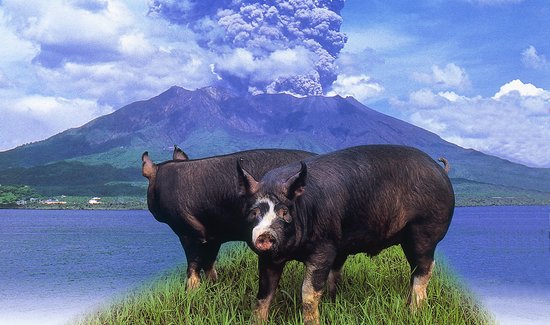

 Takeshi's Yoshiaki
Takeshi's Yoshiaki
 I cut to a thickness of about 3cm chunks of loin. One piece is about 350g
I cut to a thickness of about 3cm chunks of loin. One piece is about 350g
 The clean and take the blood vessels and smooth out the surface with a meat hammer
The clean and take the blood vessels and smooth out the surface with a meat hammer
 And dusted with flour and place in a beaten egg. That hand without any dirt that you use the skewer, work and be able to quickly
And dusted with flour and place in a beaten egg. That hand without any dirt that you use the skewer, work and be able to quickly
 I put firmly on the raw bread crumbs
I put firmly on the raw bread crumbs
 Add to pot you have to 160 degrees melt the lard
Add to pot you have to 160 degrees melt the lard
 It is a measure of the degree of change in the way of coming out of foam fried
It is a measure of the degree of change in the way of coming out of foam fried
 Cut after I finished by residual heat is removed from the lard
Cut after I finished by residual heat is removed from the lard


 "On Rosukatsu set meal" ¥ 1,800 fried loin of 350g. Some "Hirekatsu set meal" 1,800 yen, "Rosukatsu set meal" as well as 1,450 yen.Lunch 1,200 yen
"On Rosukatsu set meal" ¥ 1,800 fried loin of 350g. Some "Hirekatsu set meal" 1,800 yen, "Rosukatsu set meal" as well as 1,450 yen.Lunch 1,200 yen
 Tanaka's burst
Tanaka's burst
 Add to beaten egg dusted with flour
Add to beaten egg dusted with flour
 Give a beaten egg with a skewer that pierced the flesh, crumb
Give a beaten egg with a skewer that pierced the flesh, crumb
 I firmly put the bread crumbs in meat
I firmly put the bread crumbs in meat After fried, cut quickly
After fried, cut quickly Gravy is full of the cross section
Gravy is full of the cross section


 "Black pig Rosukatsu set meal" 1,570 yen. One piece of article 1,500 yen
"Black pig Rosukatsu set meal" 1,570 yen. One piece of article 1,500 yen
 Matsumoto's Kazuto
Matsumoto's Kazuto
 Add the cut by slicing a chunk of loin. About 150g 1 piece
Add the cut by slicing a chunk of loin. About 150g 1 piece
 And dusted with flour on the surface of the meat, to keep well spent all
And dusted with flour on the surface of the meat, to keep well spent all
 put a raw bread crumbs through a beaten egg
put a raw bread crumbs through a beaten egg
 In this way hold, put the crumbs firmly meat
In this way hold, put the crumbs firmly meat
 I put the oil. That replacement oil daily, and with that have them in soap waste oil
I put the oil. That replacement oil daily, and with that have them in soap waste oil
 Out of the oil Once fried about 5 minutes, to finish in the residual heat
Out of the oil Once fried about 5 minutes, to finish in the residual heat
 Cut with a knife to make it easier to eat
Cut with a knife to make it easier to eat


 "Set meal and black pork" 1,680 yen. Meat that is used in miso soup with pork and vegetables is also a black pig. "Black pork cutlet" one piece of article 1,380 yen.Others, "set meal and black pork tenderloin" 1,890, "set meal and shabu-shabu" 1,420 yen
"Set meal and black pork" 1,680 yen. Meat that is used in miso soup with pork and vegetables is also a black pig. "Black pork cutlet" one piece of article 1,380 yen.Others, "set meal and black pork tenderloin" 1,890, "set meal and shabu-shabu" 1,420 yen

 (Image:
(Image: 
 (Images: Ian Fisher, cc-nc-sa-3.0)
(Images: Ian Fisher, cc-nc-sa-3.0) (Image: Ian Fisher, cc-nc-sa-3.0)
(Image: Ian Fisher, cc-nc-sa-3.0)